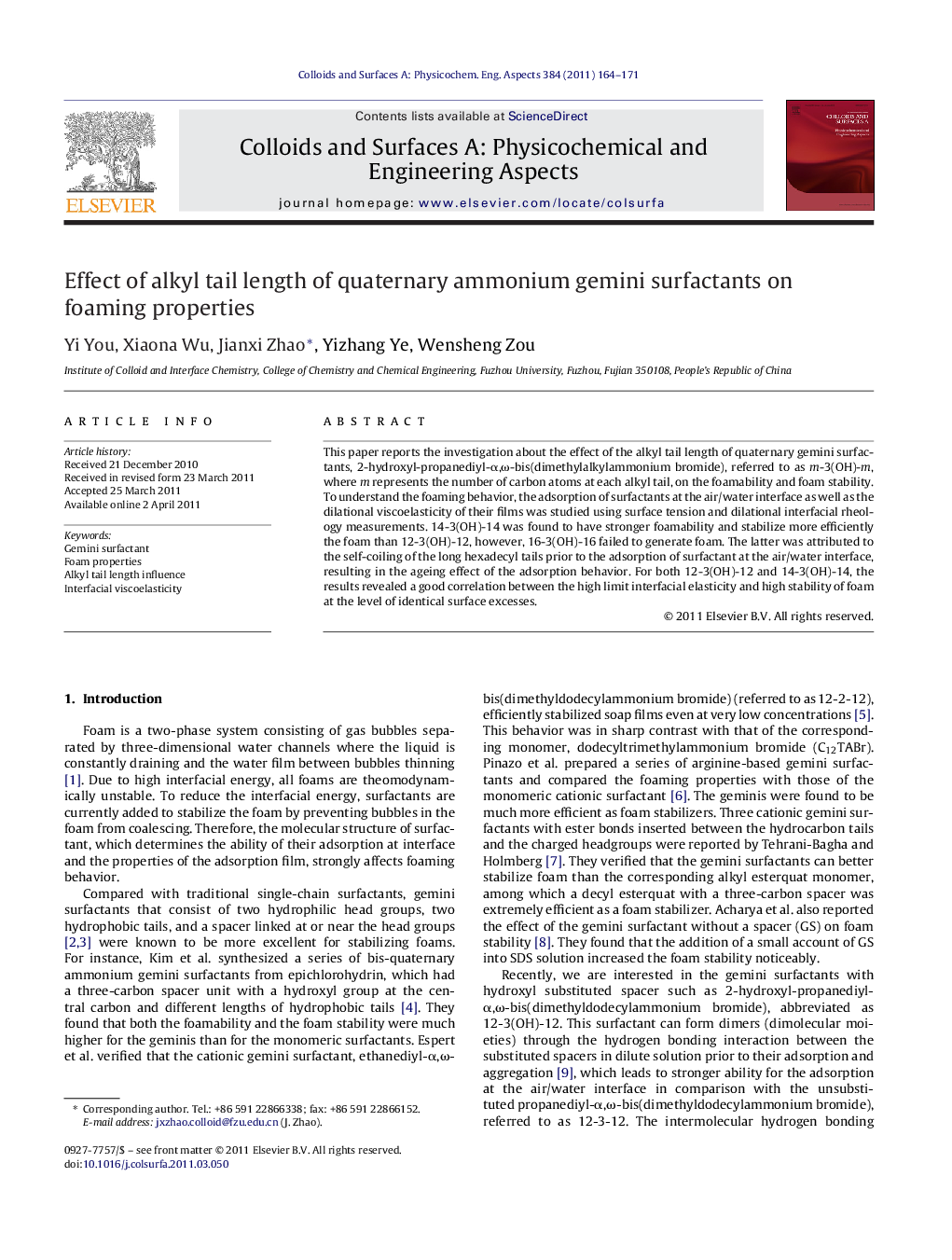| Article ID | Journal | Published Year | Pages | File Type |
|---|---|---|---|---|
| 594638 | Colloids and Surfaces A: Physicochemical and Engineering Aspects | 2011 | 8 Pages |
This paper reports the investigation about the effect of the alkyl tail length of quaternary gemini surfactants, 2-hydroxyl-propanediyl-α,ω-bis(dimethylalkylammonium bromide), referred to as m-3(OH)-m, where m represents the number of carbon atoms at each alkyl tail, on the foamability and foam stability. To understand the foaming behavior, the adsorption of surfactants at the air/water interface as well as the dilational viscoelasticity of their films was studied using surface tension and dilational interfacial rheology measurements. 14-3(OH)-14 was found to have stronger foamability and stabilize more efficiently the foam than 12-3(OH)-12, however, 16-3(OH)-16 failed to generate foam. The latter was attributed to the self-coiling of the long hexadecyl tails prior to the adsorption of surfactant at the air/water interface, resulting in the ageing effect of the adsorption behavior. For both 12-3(OH)-12 and 14-3(OH)-14, the results revealed a good correlation between the high limit interfacial elasticity and high stability of foam at the level of identical surface excesses.
Graphical abstract. Increase in the length of alkyl tails of gemini surfactant generally favors to stabilize the foam but too long tails may self-coil to fail in foaming.Figure optionsDownload full-size imageDownload as PowerPoint slideHighlights► 14-3(OH)-14 is excellent foam inducing agent and stabilizer. ► 16-3(OH)-16 fails to generate foam due to the self-coiling of hexadecyl tails. ► Foam stability can be well correlated with the dilational interface elasticity.
